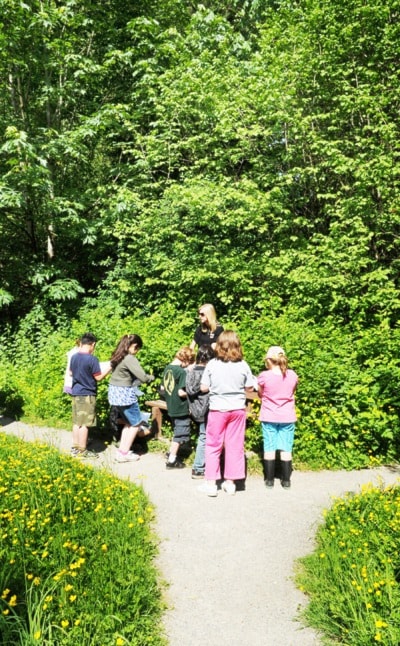The amazement and wonder on a 10-year-old boy’s face as he peers into the Salmon River searching for tiny creatures and salmon fry sums up the Salmon in the Valley education program in Langley, says co-ordinator Liz Robertson of Trinity Western University.
Since 2003, the program has allowed Grade 4 and Grade 5 classes to visit the Salmon River on the TWU campus for full-day field trips where they learn about water, insects, salmon and human impacts on salmon habitat. According to Doug McFee of the Salmon River Enhancement Society, this program is the “best thing we have done.”
In 2003, the SRES, DFO and TWU formed a partnership to develop the Salmon in the Valley field trip program. Two years later, the program got a huge boost when it received a grant from the Natural Sciences and Engineering Research Council of Canada.
Last year, 500 students in more than 25 classes spent the day with the Salmon in the Valley program, which also receives funding from Aldergrove Credit Union.
Trinity’s Chris Hall, who manages the program, said that every May the two small tributaries of the Salmon River which run through the Ecosystem Study Area (ESA) at TWU provide a unique classroom.
“We hire TWU education, environmental studies and biology students who connect well with the youngsters,” he said. “Hands-on activities and educational games make the day a hit with students and teachers alike.”
Like the Science in the Valley program at TWU, which educated more than 1,200 students in Grade 7 to 9 last year, field trips are designed to meet the learning outcomes set out by the ministry of education.
“We demonstrate how streams act as salmon nurseries, the importance of water quality, how forests provide shelter for salmon and other conservation issues,” Robertson said.
The Salmon River remains a provincially important Coho stream because it has very good habitat, McFee said.
“There are concerns for the future which is why the river has been named one of the B.C.’s Most Endangered Streams several times in recent years.”
There is still time to deal with the issues.
“Educating not only students but adults to value what we have is our most important job,” McFee said.
Parents are invited to join the field trips with their children, and they can learn more at an open house tomorrow (Thursday) at TWU at 10 a.m.
For more information about Salmon in the Valley or Science in the Valley workshops contact liz.robertson@twu.ca.
